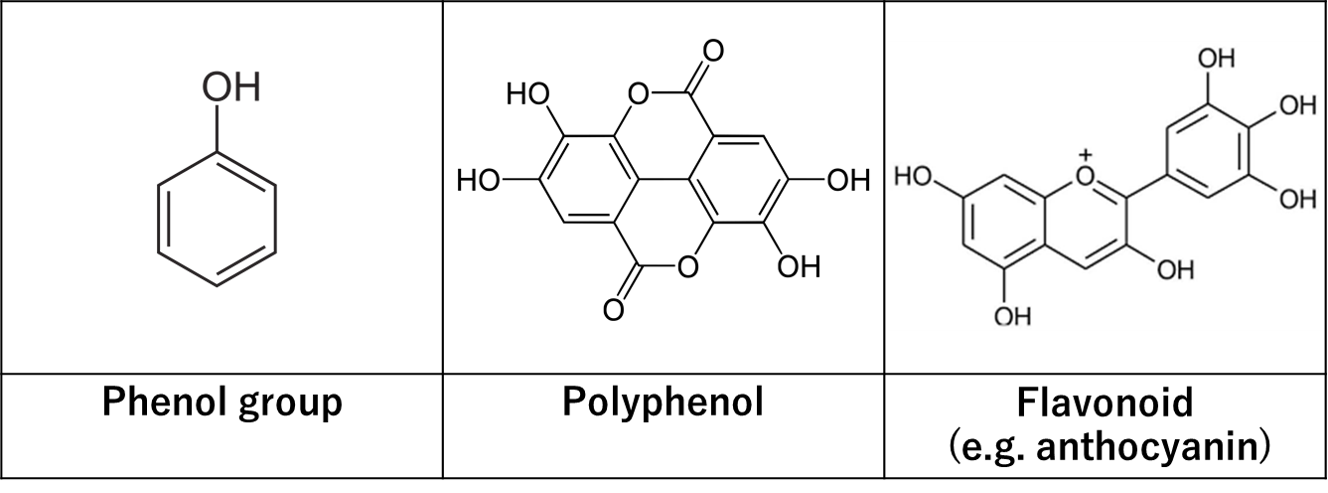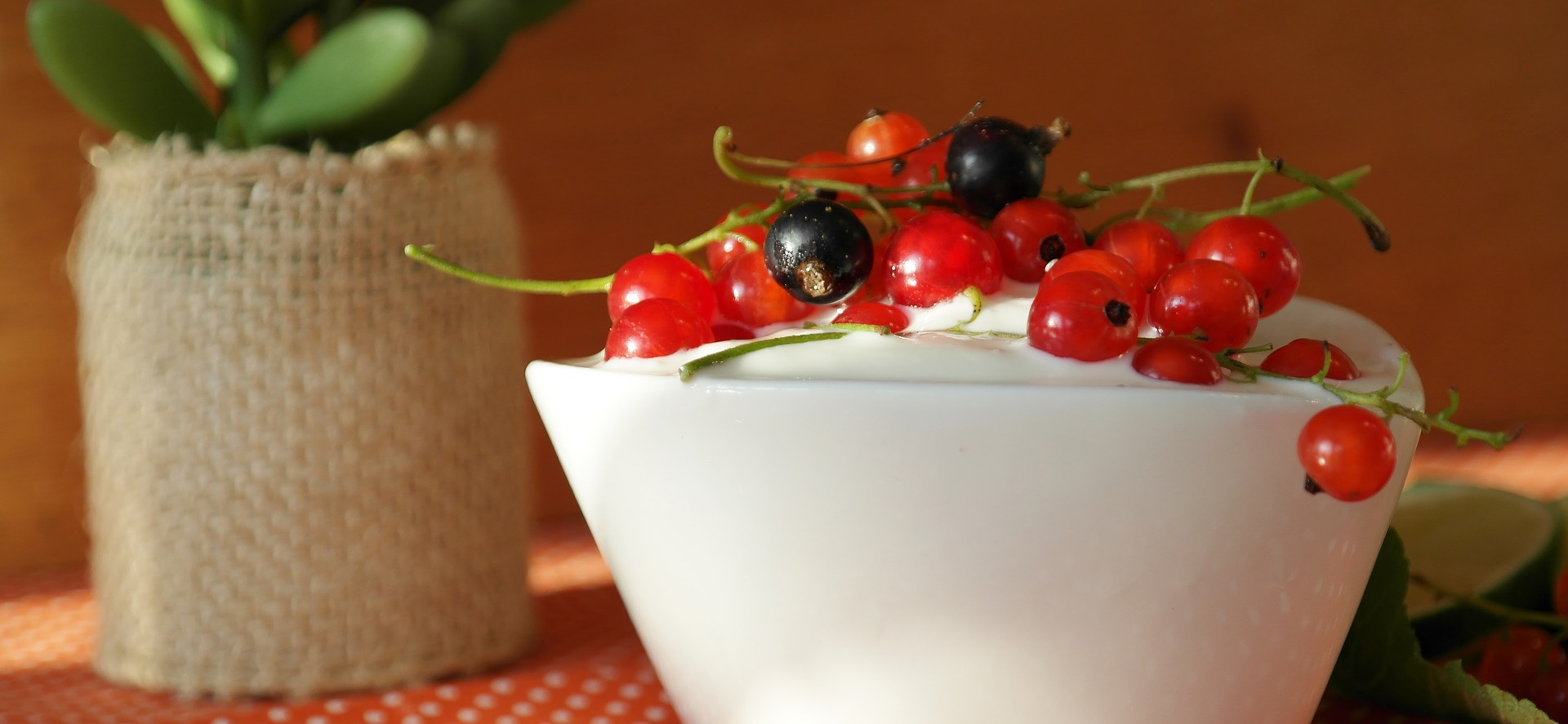Our bodies contain a wide range of antioxidants, some manufactured by our bodies, and some only obtained from the food we eat. Polyphenols are one of the most commonly occurring antioxidants in the food we eat, particularly in fruit and vegetables. These are compounds with multiple (poly) phenol groups, chemical ring structures with one or more hydroxyl (OH) groups attached, and called phenyl rings.

Phenyl rings are very good at reacting with free radicals and deactivating their damaging reactivity. Polyphenols have diverse roles in plants, ranging from being anti-microbial to providing the bright red and blue colours of berries that attract birds to consume the berries and aid dispersal of the berries’ seeds.
There are four different types of polyphenols – flavonoids, phenolic acids, stilbenes and lignans. Of these flavonoids are by the far the most abundant and are commonly found in fruit and vegetables. There are over 5000 different flavonoids found in nature. Some of the most commonly occurring flavonoids include quercetin (onions are a good source), catechins (tea is a good source), proanthocyanidins (grapes are a good source), hesperetin (citrus fruit are a good source) and anthocyanins (berries are a good source). So an anthocyanin is part of the flavonoid family of polyphenolic antioxidants.
Of all the commonly consumed fruit berries contain the some of the highest levels of polyphenol compounds. These polyphenols are all most entirely flavonoid anthocyanins. Of all the commonly consumed berries New Zealand blackcurrants have the highest levels of anthocyanins.
Comments are closed.


